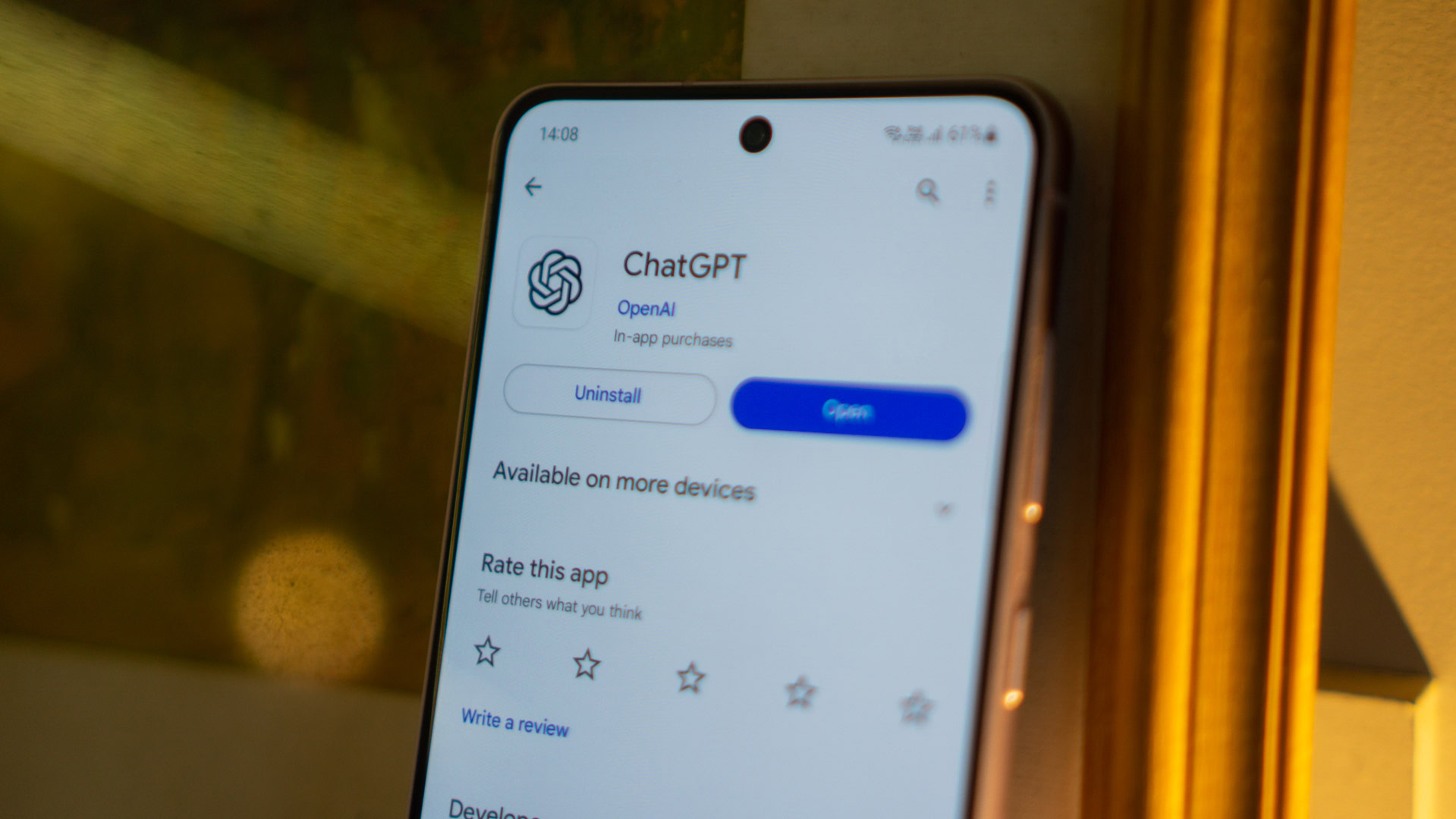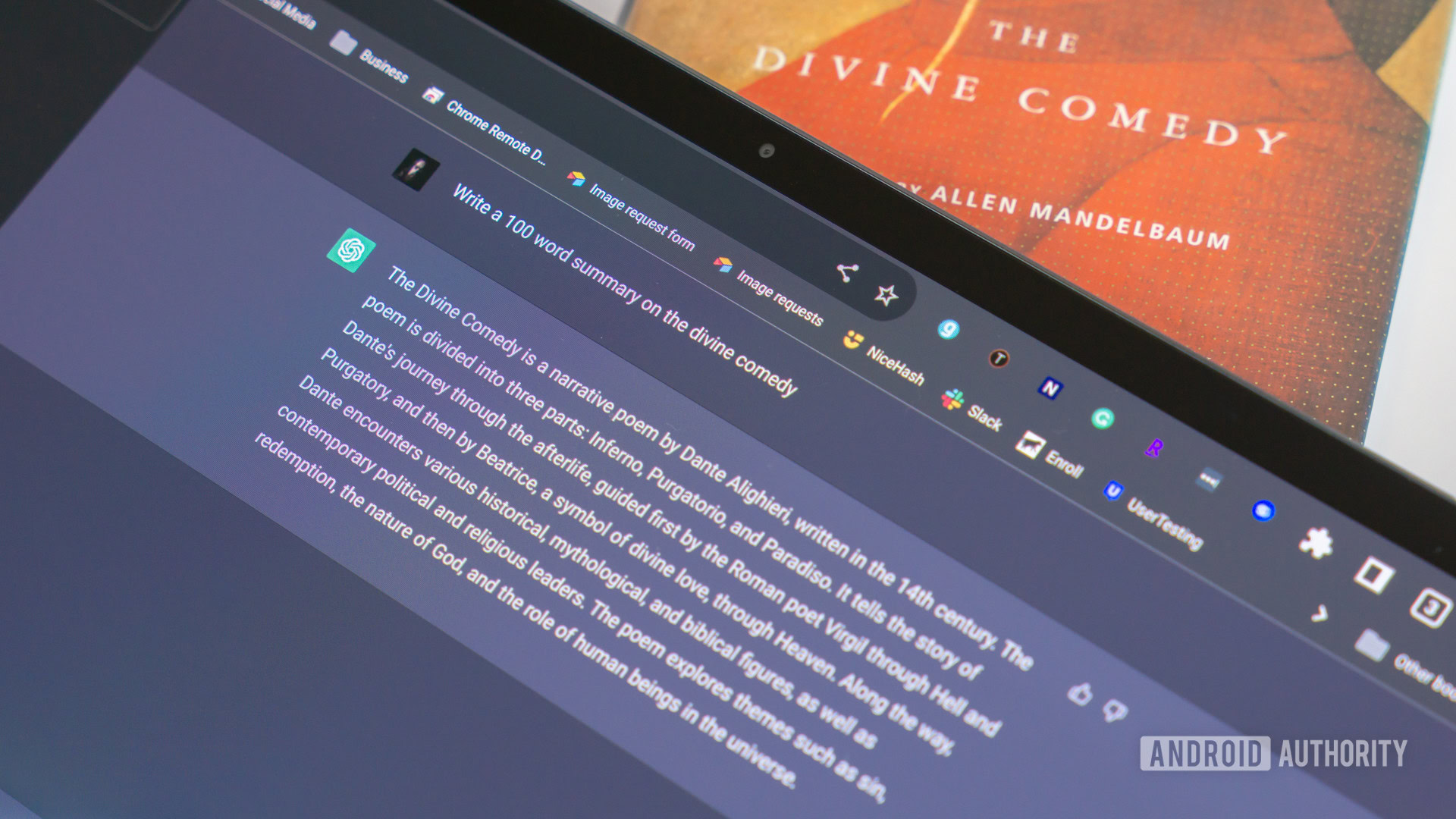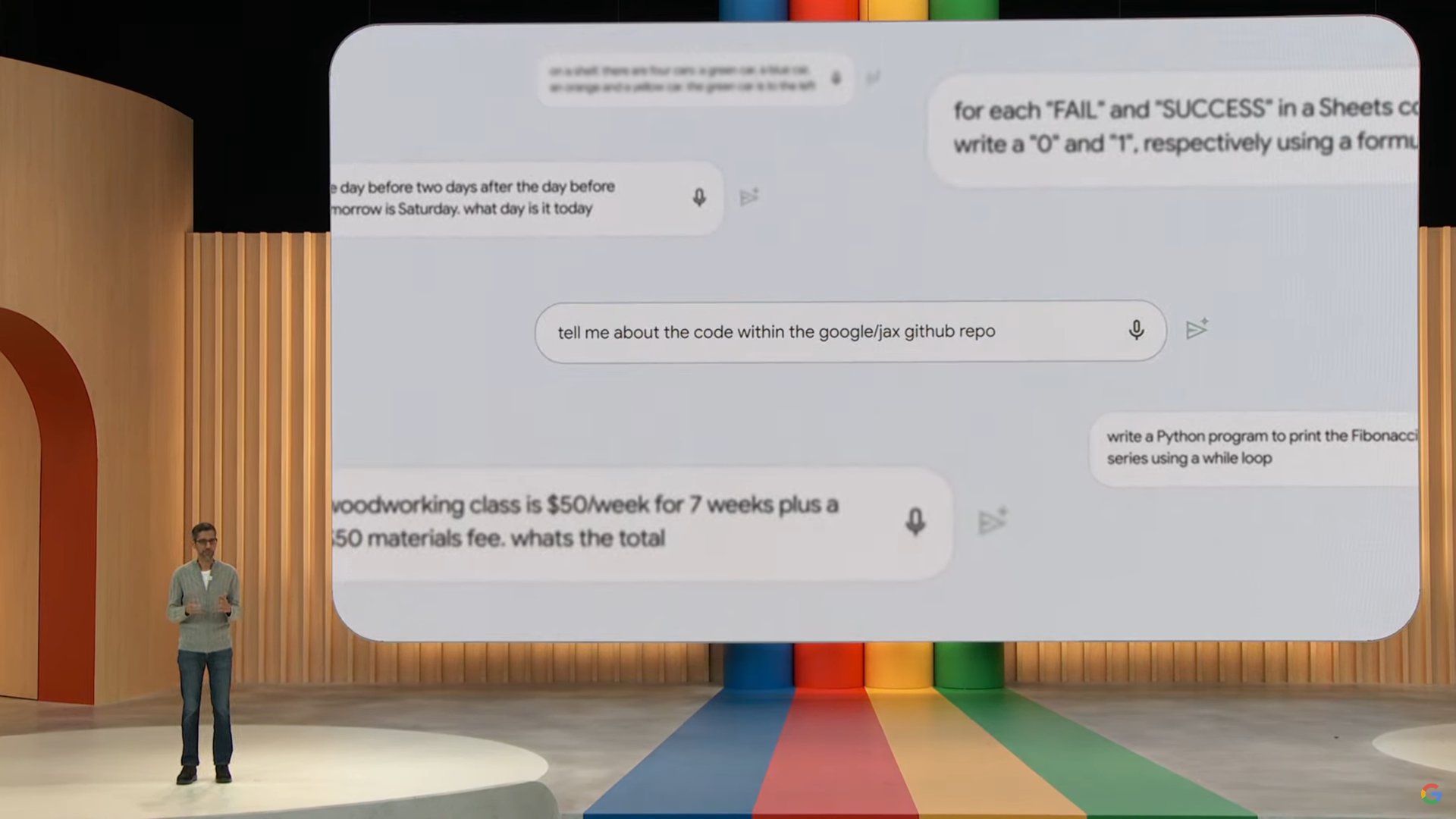Affiliate links on Android Authority may earn us a commission. Learn more.
Can Turnitin detect text from ChatGPT?

AI tools have undoubtedly made our lives easier, automating mundane tasks like planning vacations and writing emails. Modern chatbots like ChatGPT have also been trained on everything from scientific literature to Shakespeare, meaning you can ask them to write long essays on just about anything. These qualities make chatbots appealing in an academic environment, but you might be wondering: can plagiarism detection software like Turnitin detect text from ChatGPT? Here’s everything you need to know.
Yes, Turnitin has gained the ability to detect AI-generated text from ChatGPT. For now, it can detect OpenAI’s GPT family of large language models. That also includes the ChatGPT Plus’ more capable GPT-4 model and Microsoft Bing Chat’s Creative mode. However, Turnitin hasn’t tested its AI detection on competing chatbots yet. Keep reading to learn more.
JUMP TO KEY SECTIONS
Can Turnitin detect ChatGPT generated text?
Yes, Turnitin can detect if your submitted assignment contains generated text. In other words, it can detect text generated by ChatGPT. When an instructor uploads an assignment or block of text to the software, it will automatically look for plagiarized and AI-generated text. However, this information isn’t shown to students and it’s up to the instructor to act on the results.
Turnitin’s ChatGPT detection shows a percentage of text that it believes originated from a natural language chatbot. A high proportion of AI-generated text will translate to a higher percentage in the final report. Additionally, the software can automatically highlight text that it suspects were written by an AI.
Turnitin can now detect ChatGPT and AI-generated text in student submissions.
Turnitin has trained its own machine learning model, presumably using labeled AI-generated and human-written text, to distinguish one from the other. The only downside is that the minimum word count needs to be at least 300 words. So for short-form writing, Turnitin might not detect the presence of ChatGPT-generated text.
How does Turnitin detect ChatGPT?

AI chatbots like ChatGPT rely on large language models (LLMs). These machine learning models are capable of generating grammatically coherent text that reads as if a human wrote it. However, the text they produce contain certain patterns that become easy to detect with sufficient training.
Until recently, Turnitin could only detect plagiarism To achieve this, the software maintains a database of text sourced from a variety of sources. Whenever an educator uploads an assignment or document, Turnitin cross-references this database to detect if an overlap exists. And if the submission matches an existing source, the software highlights that portion of the text as plagiarized and alerts the educator.
Turnitin highlights suspected AI-generated sentences in its Similarity reports.
However, ChatGPT and other AI writing tools could easily avoid Turnitin’s rudimentary plagiarism detection. Large language models do not simply regurgitate information but instead have the ability to generate brand-new text that has never existed before. So to plug this loophole, Turnitin added an AI writing detection tool to its Similarity Report in April 2023.
Large language models like ChatGPT’s GPT-3.5 generate text in a very formulaic manner. More specifically, they use a probabilistic method of picking words to form sentences. Humans, on the other hand, don’t write as predictably. So even though ChatGPT was trained on human-generated text, its results are easily distinguished from the real thing.
Turnitin’s AI flagging tool will also work in text samples generated by ChatGPT and Bing Chat. So if you’re thinking about using a ChatGPT alternative to subvert detection, you may want to reconsider.
Can Turnitin detect AI chatbots other than ChatGPT?

So far, we’ve only discussed Turnitin’s ability to detect AI-generated text from ChatGPT and its derivations like Bing Chat. But what about competing chatbots and large language models? Google Bard, in particular, doesn’t use the same GPT-3.5 model as ChatGPT. Instead, it uses Google’s in-house PaLM 2 language model. Could that help avoid detection?
The answer’s not clear as Google’s PaLM 2 (and other language models, for that matter) also use the same Transformer machine learning architecture at their core. This means that they all rely on probability to predict subsequent words and generate text. If Turnitin has developed an AI that can detect these patterns, it’s only a matter of time before it catches text generated via Bard too.
Still, Turnitin currently only guarantees that it can detect text generated by GPT-based models. That could change at any point in the future, though, so we’d recommend not using AI to automate your homework. You could still responsibly use AI to assist you, without telling it to do all of the work. Here are some suggestions:
- ChatGPT sports a generous input character limit, allowing you to submit your work for feedback. You can ask the chatbot to review your grammar and suggest improvements.
- You can ask ChatGPT to summarize long documents or research papers, which can serve as a quick reference for your own analysis.
- If you get stuck while solving a programming or mathematical problem for an assignment, ask ChatGPT for guidance.
- Before you submit your assignment, you can have ChatGPT review it from your instructor’s perspective. This works especially well if you have the marking rubrics for your subject.
We’ve listed some other ways in which you can use the chatbot in our round-up of the best ChatGPT prompts.
FAQs
Turnitin doesn’t state a minimum acceptable score because it leaves the interpretation of its report up to the instructor. That said, you should strive for a Turnitin score that lands in the Blue or Green zone (0 to 24%).
Over 15,000 institutions use Turnitin and most universities do use some form of plagiarism detection software.
Turnitin cannot always detect Quillbot, but the company is working on using AI to detect paraphrased content in the near future.
Not yet, but Turnitin says that it will release a tool to check for paraphrasing in the near future. A beta launch is expected sometime in 2023.
No, Turnitin generates a Similarity that helps educators determine whether a particular assignment or submission contains plagiarism. In other words, it doesn’t make a judgement – leaving that job up to the teacher.